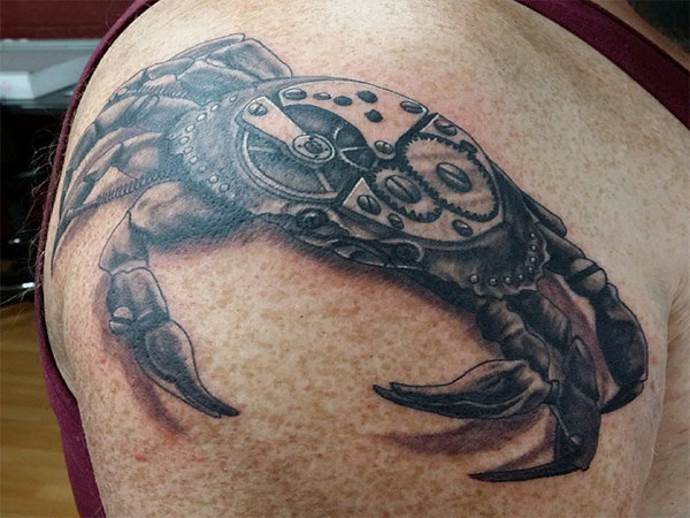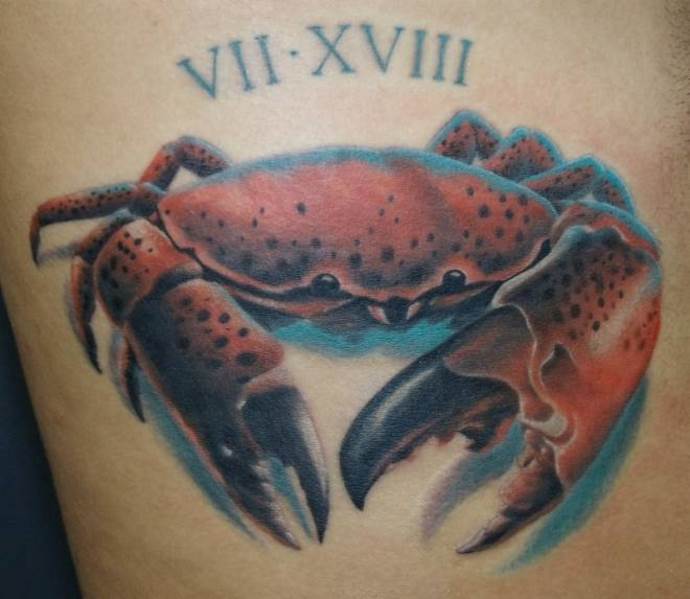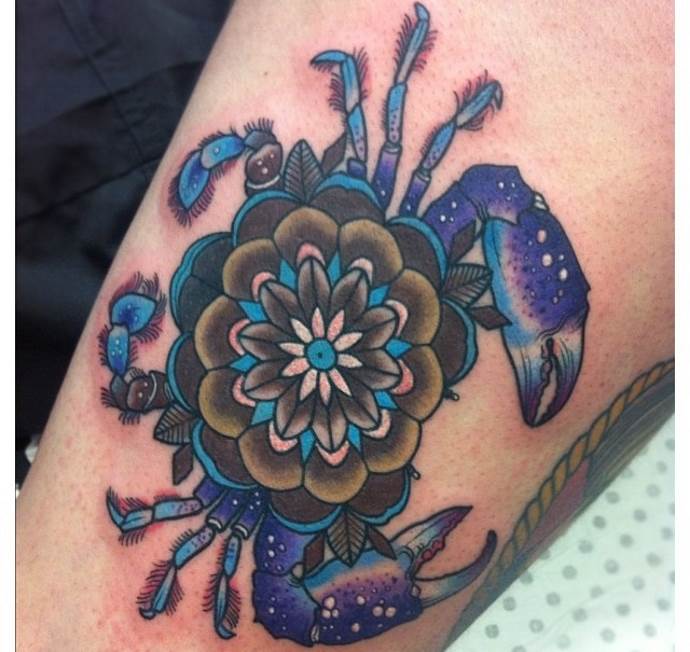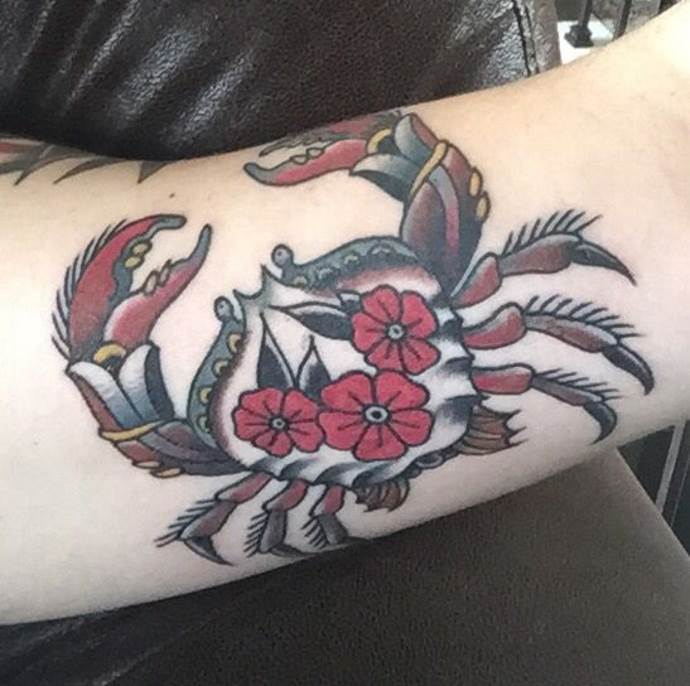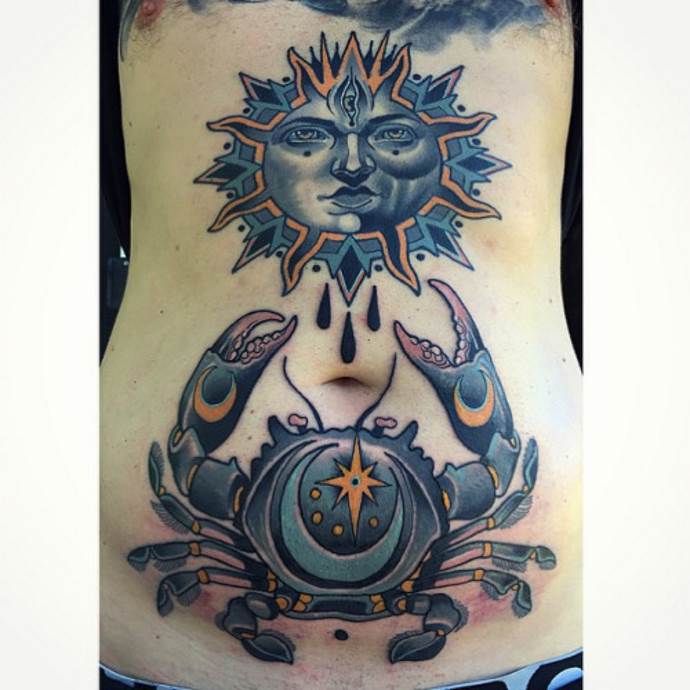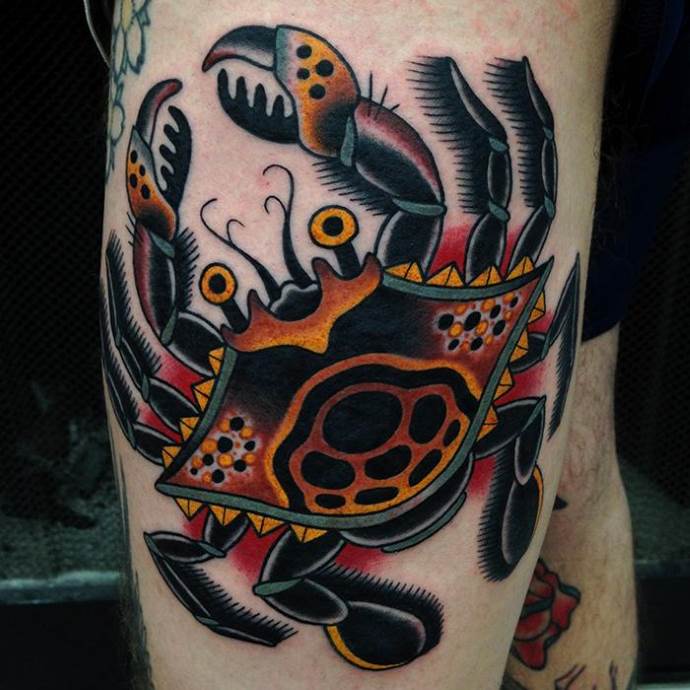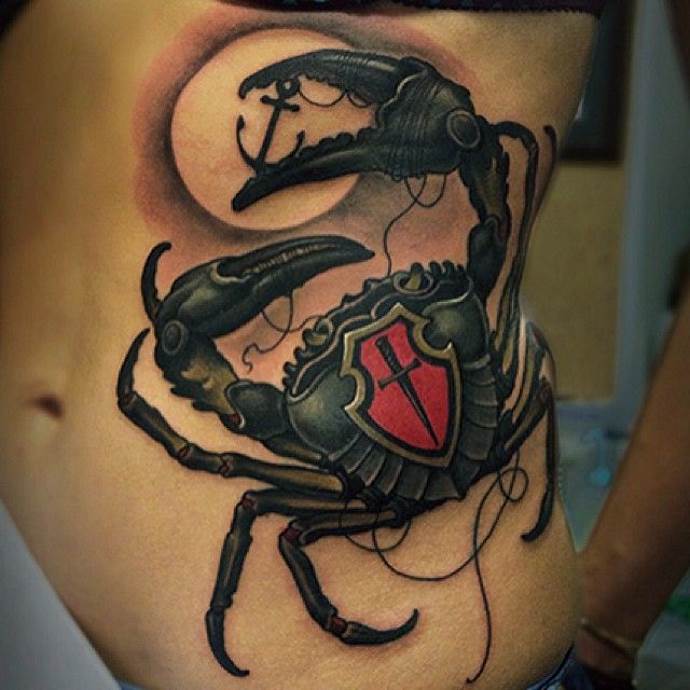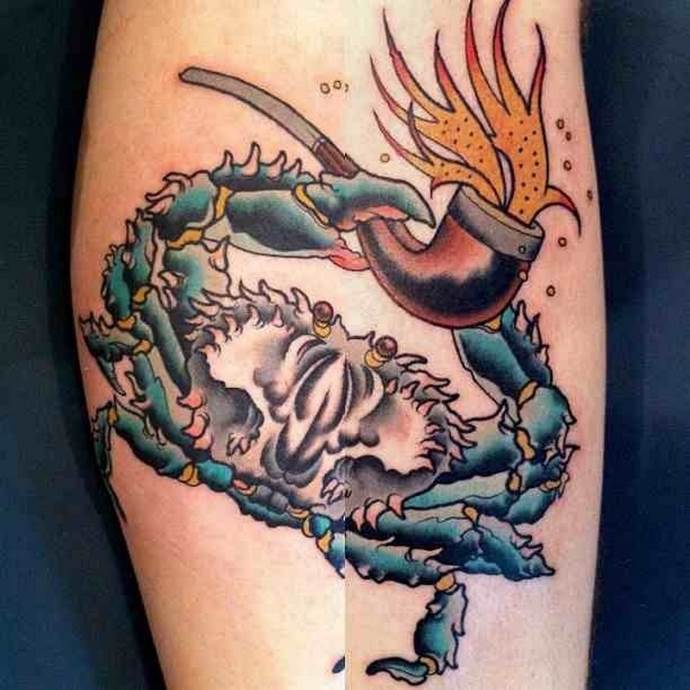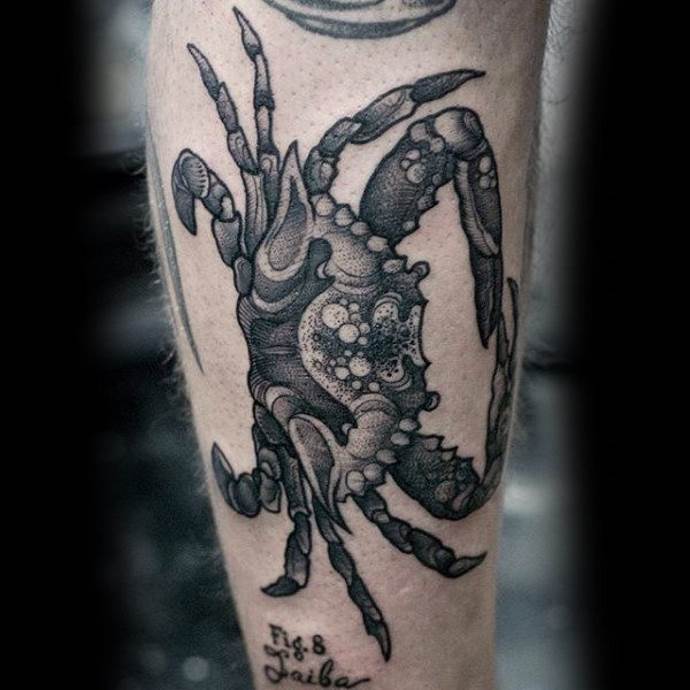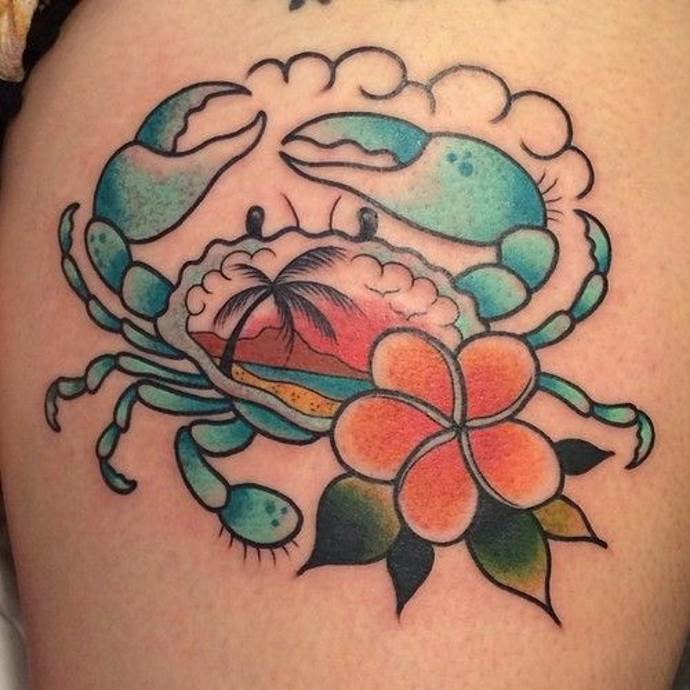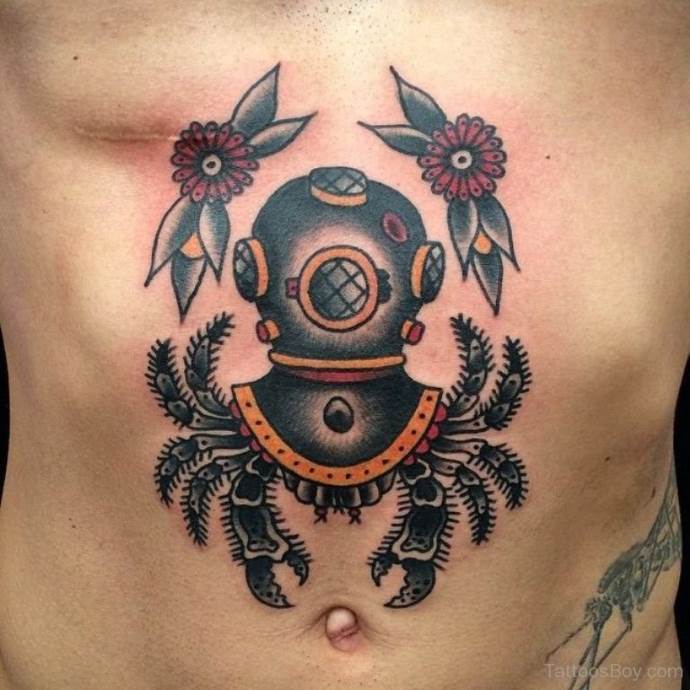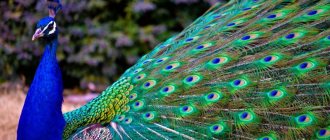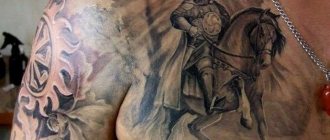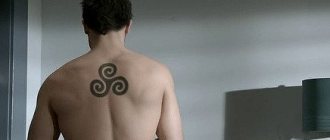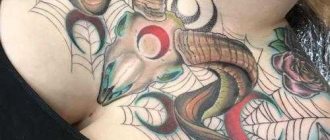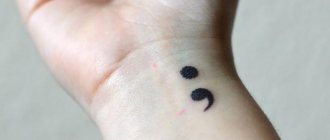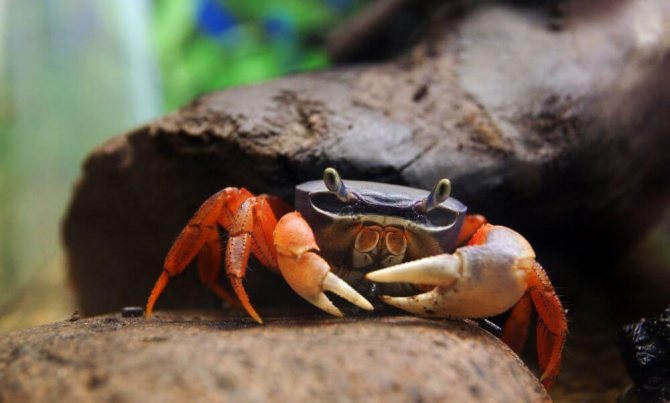
The ten-legged crustacean with a shortened belly is one of the most beloved sea delicacies of our time. The population doesn't quite understand how to cut and eat crab in public, but thoughts of a fancy restaurant dinner with this particular seafood appear all the time.
The crab meat is really very soft and tender and is considered a delicacy. The process of extracting the meat from five pairs of legs and a massive shell is not so exciting. Only a few minutes of labor-intensive manipulation will bring the happy customer closer to that very marvelous seafood flavor.
But what is actually a seafood, how to eat it correctly and what can be dangerous exotic dish?
General characteristics of the seafood
Crabs are an infraorder of ten-legged crustaceans. An acceptable name is short-tailed crayfish. Crabs are one of the oldest creatures, known fossils of which date back to the Jurassic period. Clearly, these fossils are the distant ancestors of modern crustaceans, referred to as primitive crabs.
Contents:
- General characteristics of the seafood
- Useful properties
- Chemical composition
- How to eat the seafood properly
- Application of the ingredient in cooking
- Contraindications to use
The head of the arthropod animal is small and flattened. The abdomen is short, symmetrical, protects the interior cavity of the crab and curls up behind the jawbone. The animals are differentiated by gender. The abdominal limbs of males are converted into copulatory organs, while the females have special organs for bearing eggs.
Crabs live both in the sea or in fresh water, as well as on land. There are about 4 thousand species of arthropods known today. Most of them are used in the food industry. The size of the animal depends on the specific species. For example, the giant crabs Macrocheira kaempferi, which weigh about 20 kilograms and have limbs up to 4 meters long, live on the shores of Japan.
Crabs account for 20% of all marine crustaceans that are caught, farmed and sold. About 1.5 million tons of arthropods are used annually in the food industry.
All crabs, other than freshwater crabs, reproduce in water. The metamorphic development of an animal looks something like this: the emergence of a pelagic larva from a calf (zoea), then transformation into a full-fledged larva (megaala), followed by transformation into an adult arthropod. Freshwater crabs skip the larval formation stage.
Arthropods are capable of breaking off their own limbs. Such a technique is most often used during the pursuit of a crab by a predator. New, perfectly healthy organs grow in place of the broken limbs and quickly begin to function.
Ancient Egyptian scorpions
The ancient Egyptians considered the scorpion a symbol of death. It is known that in the pre-dynastic period in Egypt, the king Selek (Scorpion) ruled, and his wife Seleket was the patroness of witchcraft and healing. Later also appeared a female deity Seleket, considered a companion of Isis, whose attribute was a scorpion. It was believed that scorpions never attacked women. The image of the scorpion was closely linked to that of the snake. Both of these animals living underground, dangerous for people, mysterious and enigmatic, were considered the embodiment of mystery, wisdom and knowledge. It was believed that the scorpion sucks all poisons from the earth, making it suitable for agriculture, and its venom can be used as an antidote.
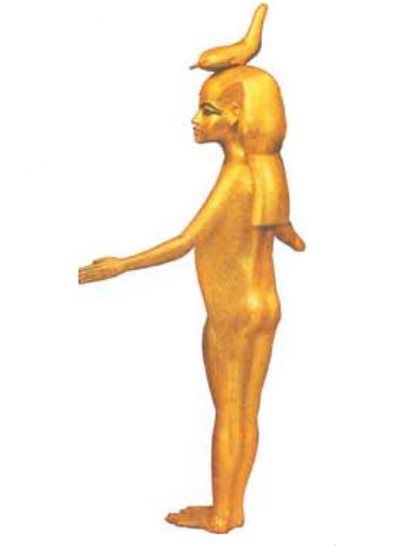

Gold statue of the goddess Seleket from the tomb of Tutankhamun
Useful Properties
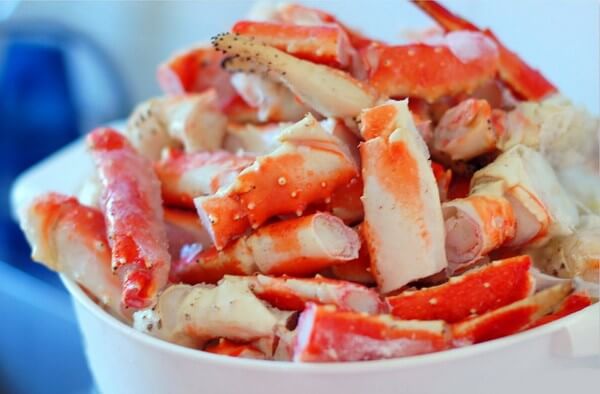

The meat of arthropods contains a high concentration of useful active substances that make the body healthier and the individual happier. The content of essential acids in crab is several times higher than in fish and other seafood. It is: 80% moisture, 1.4% lipids, 19% protein, 2% ash, 2% glycogen.
Crab is the record holder in terms of Sodium (Na) content.
Crab meat is considered a dietary product. Nutritionists advise to include it in the diet of thin people and those who watch out for their figure. But we should not forget about the dosage: meals consisting of seafood should not appear in the menu more than three times a week.
Due to the vitamin (taurine, tocopherol, ascorbic acid) and nutrient (polyunsaturated fatty acids, iodine, zinc, calcium) composition the product is useful for anemia, visual impairment and cardiovascular disease.
What else is useful for crab meat:
- strengthens the heart muscle;
- lowers the level of cholesterol in the blood and keeps it constant;
- protects the body from the pathology of the heart and blood vessels (serves as a kind of prevention);
- normalizes the level of thyroid hormones and improves the functionality of the endocrine system;
- promotes the growth of visual performance, fights the problem of dry eyes;
- Improves the digestive system, "boosts" the metabolism and promotes better digestibility of food;
- combats severe psycho-emotional stress, protects the nervous system from depression and anxiety;
- lifts your spirits and gives a sense of peace;
- prevents premature aging of all body systems and skin;
- It acts as an aphrodisiac and increases libido in both partners.
The constellation and zodiacal sign of Cancer
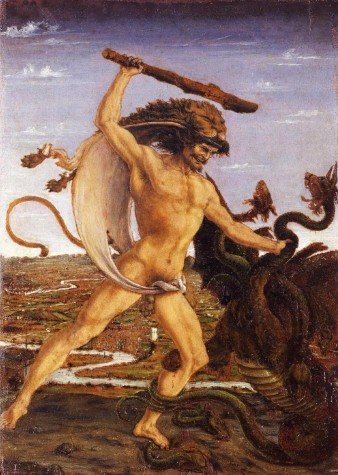

А. Pollaiolo. Hercules and the hyrda.
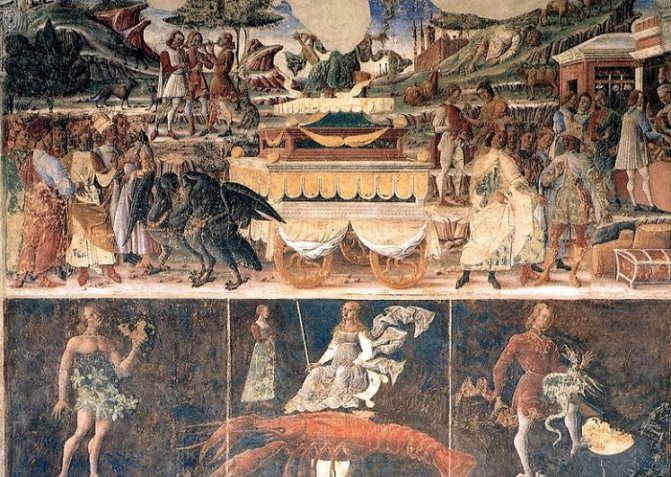

The zodiac sign of Cancer. Fresco by F. del Cossa in the Palazzo Scifanoia, Ferrara, 15th century.
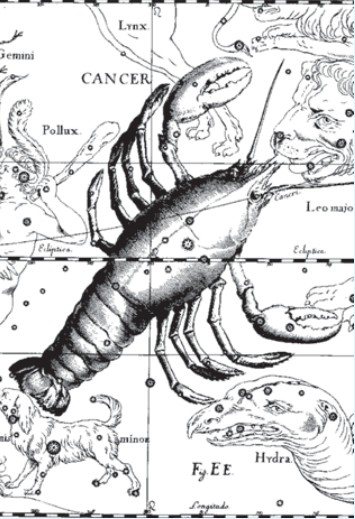

The constellation of Cancer. Illustration from the astronomical atlas "Uranography" by J. Hevelius
According to the ancient Greeks, the constellation Cancer appeared in the sky to commemorate the feat of Hercules. This brave hero had to kill the Lernaean Hydra, to the aid of which came Cancer. Cancer was killed by Hercules, and the goddess Hera lifted the dead hydra defender to the sky in gratitude.
Chemical composition
Nutritional value (per 100 grams of raw red king crab)
| Caloric value | 96 kcal |
| Protein | 18,2 г |
| Fats | 1 г |
| Carbohydrates | 0 г |
| Dietary fiber | 0 г |
| Water | 78,9 г |
| Ash | 1,9 г |
Vitamin composition (in milligrams per 100 grams of raw red king crab)
| Retinol (A) | 0,03 |
| Thiamine (B1) | 0,05 |
| Riboflavin (B2) | 0,08 |
| Niacin (B3) | 2,5 |
| Pantothenic acid (B5) | 0,6 |
| Pyridoxine (B6) | 0,35 |
| Folic acid (B9) | 0,02 |
| Cobalamin (B12) | 0,001 |
| Ascorbic acid (C) | 1 |
| Tocopherol (E) | 1,5 |
| Nicotinic acid (PP) | 3 |
Balance of micro- and macro elements (in milligrams per 100 grams of raw red king crab)
| Potassium (K) | 310 |
| Calcium (Ca) | 100 |
| Magnesium (Mg) | 50 |
| Sodium (Na) | 250 |
| Sulfur (S) | 182 |
| Phosphorus (P) | 260 |
| Iron (Fe) | 4,3 |
The constellation and zodiacal sign of Scorpio
There are two myths that explain the appearance of the constellation Scorpio in the sky. One myth says that Scorpio attacked the chariot of the mortal son of the god Helios, Phaeton. Scorpion frightened the horses harnessed to the divine chariot and the most inexperienced driver, the youth lost control and died in the river Eridanus. According to another version, in the sky is depicted Scorpio, stung in the heel of the hunter Orion, who died on the island of Chios. Scorpio is the eighth sign of the zodiac, the water sign, ruled by female energy. It is associated with cold, night and moisture. This sign is characterized by determination, energy, jealousy and industriousness, as well as cruelty and sexual activity.
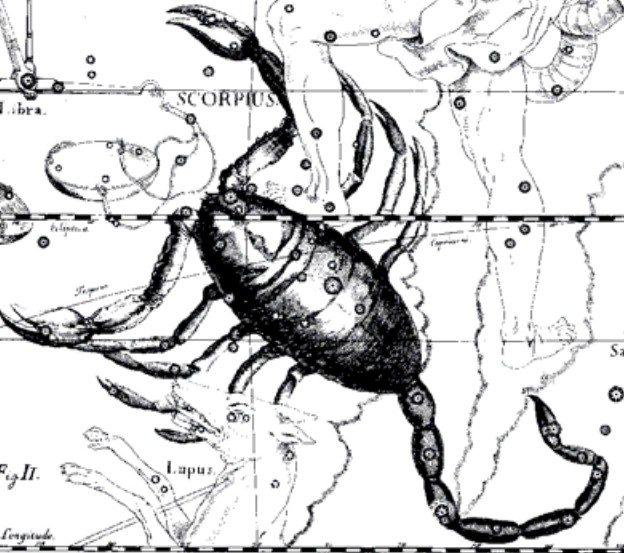

The constellation Scorpio. Illustration from the astronomical atlas "Uranography" by J. Hevelius.
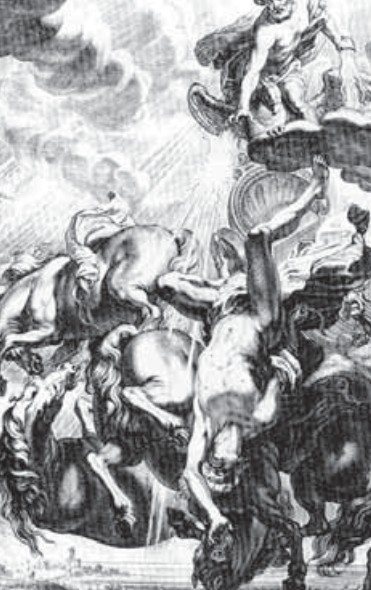

Phaeton's chariot. From the seventeenth century engraving.
Share link
How to eat seafood properly
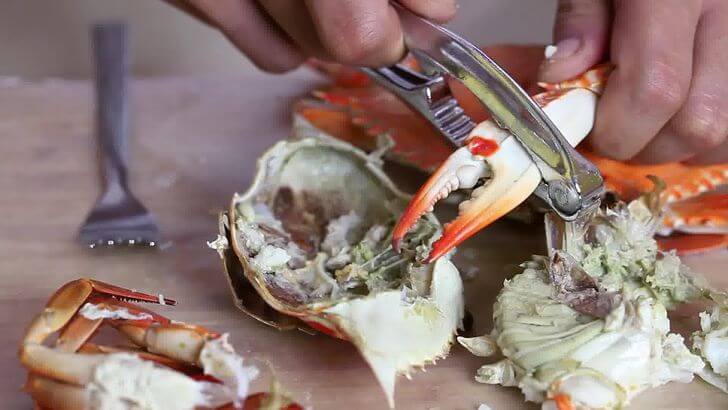

If the meal takes place at home, lay a thick paper, another tablecloth or even some newspaper pages on the table. Cutting up the crab will bring real chaos to your home in the form of messes, juices, and chunks of crustacean flesh. Take care of yourself ahead of time and cut down on cleanup time.
In a fish restaurant you are served a special crab hammer, tongs for splitting the claw, a blunt knife and a special oblong instrument with a point on the end. Everything fits at home: any knives, forks, and even a device for cracking nuts.
As soon as the browned representative of the sea is on the plate in front of you, proceed to the active actions. Rotate the legs and claws away from the body. If you don't want to tear the legs with your hands (or you don't have enough strength), use a blunt knife. The knife is inserted at the point where the base of the claw/leg and the body of the crustacean join. Lightly press on this point and the leg will literally fall off on its own. Remove the meat from the legs with an oblong pointed instrument. The claws should be crushed, cleaned and the remaining meat removed with an instrument.
Turn the crab over on its back, belly side up. Separate the thoracic part from the shell (it is easy to remove from the base of the carcass when the claws and legs are separated). Take the upper part of the shell in your hands and break it in half. Clean the meat of inedible green/brown compounds and enjoy your meal.
What to look for when cutting the seafood
- Cartilage. Each claw contains dense cartilage. There's no reason to eat it (and you can't), so cut the claws carefully and thoroughly to avoid inedible elements.
- Spines. The shell of the crustacean is covered with small spines, which, if pressed hard, can cause pain. Be careful to use the available arsenal of tools as much as possible.
- Small, dense elements. The body of a crab is filled with small bones, cartilage, and various compounds that are not suitable for eating. They can damage the mucous membrane or simply get stuck in the esophagus. Be careful and check the meat you are about to send into your mouth.
Crabs as mythical creatures
Different peoples have had their own vision of the image of this crustacean. For example, in ancient Greece it was considered a messenger of higher powers, and in China - a harbinger of deception. The Incas were wary of this creature: they believed that the moon was waning because the crab took a bite out of it every night.
The distinctive feature of the crab is that from time to time it sheds its shell, which has become cramped. That is why the Egyptians and the Australian aborigines, it was considered a symbol of rebirth. The Buddhists took the image of the crab mystical meaning, because it denoted the period of reincarnation of the soul after the death of man. The Thais considered this crustacean part of the ritual call of rain. In the East, it symbolized the benevolence of the sea element and protect sea travelers and sailors from the troubles that might happen to them during the voyage.
The image of the crab can be seen in the modern Tarot cards on the major arcana called the Moon. The meaning of this card is a well-developed intuition, spiritual search, attachment to family.
Using the ingredient in cooking
Recipe for ravioli with crab and apples
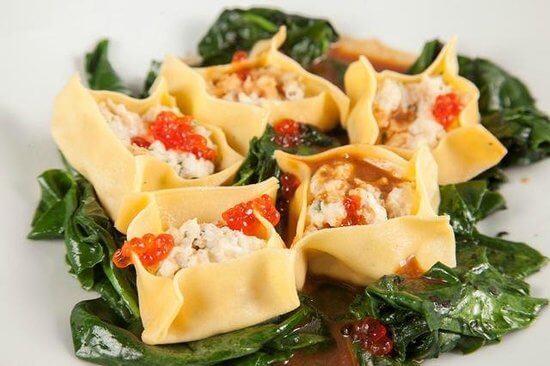

We will need:
- drinking yogurt (dairy-based without flavorings or sweeteners) - 150 ml;
- Greek yogurt - 10 ml;
- gelatin - 1 sachet/packet;
- crab meat - 50 gr;
- Green apples (sourish flavor) - 40 g
- Avocado (choose ripe dark green fruit) - 1 pc;
- cream (any fat content) - 10 ml;
- coriander (you can replace it with your favorite greens) - 5 gr
- Lemon or lime juice - 3 ml.
Preparation
Prepare the gelatin according to the instructions on the package (depends on the specific gelatin). Mix the ready gelatin with drinking yoghurt, mix the ingredients until a homogeneous liquid mass is obtained. Prepare a baking tray: cover it with baking parchment and spread the gelatin-yogurt mixture evenly over it. Place the baking tray in a dry, dark place until the mixture hardens. Once the gelatin has taken hold and the yogurt has hardened, cut circles out of the hardened plate. The size of the circles depends on the size of the ravioli you want.
Beat half of the avocado in a blender, then pour in the cream. Place the resulting mousse in the refrigerator. Chop the other half of the avocado and mix together with the chopped crab meat, herbs and apples. Dress the apple-meat salad with lemon/lime juice and Greek yogurt.
Place the finished filling inside the yogurt and gelatin circles and form the ravioli. Serve with avocado mousse immediately after making.
California rolls recipe with crab meat
Culinary Fact: California was invented by Japanese man Ichiro Mashitoi specifically for the American people. But the dish has become international and, as fate would have it, especially loved by the Slavs.
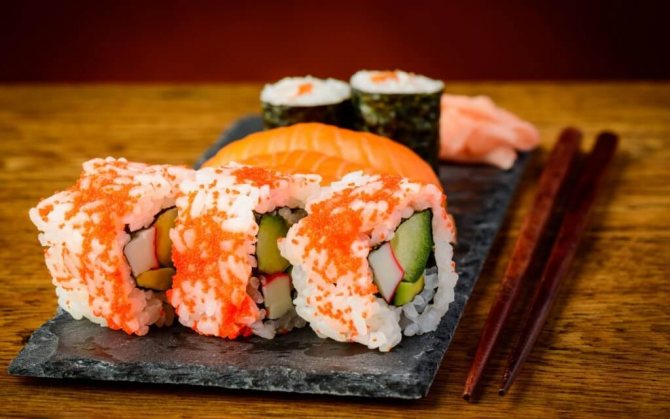

We will need:
- Rice (it is recommended to use nishiki) - 150 g;
- Vinegar for cooking sushi and rolls - 2 tablespoons;
- crab meat - 200 gr;
- Avocado (choose a fruit with a firm structure) - 100 gr;
- Japanese mayonnaise - 40 ml;
- tobiko (caviar) - 100 gr;
- nori (dried seaweed) - 5 units;
- Wasabi and pickled ginger to taste.
Preparation
Rinse nishiki rice in cold water. Rinse until the water is crystal clear. There is no need to grind rice or peel each grain intensively. It is important that the grains are not broken or damaged. Rice is the main ingredient of rolls, so it must be cooked perfectly. Gently stir the rice under running water, then transfer it to a sieve, put it inside a large pot and let the excess liquid drain off. The rice needs 15-20 minutes to get rid of the moisture and dry completely.
Boil the rice in a rice cooker or follow the instructions on the package. When the rice is ready, leave it in a closed container for another 15-20 minutes. During this time the groats will cool, become more dense and easily take the desired shape. Add vinegar to warm rice and knead until liquid is absorbed. Lightly dampen a towel, cover the pan with the rice and let stand another 20 minutes.
Boil the crab for 20 minutes in filtered water without salt or spices, then cool. Take the meat out of the second phalanx (this is where it is most delicious and juicy) and finely chop. Peel the avocado and cut into narrow slices.
Form a roll in this sequence: nori sheet, rice, avocado, Japanese mayonnaise, crab meat. Roll up the roll and dip in tobiko caviar. Carefully cut off the edges of the roll and cut it into several portions. Place the dish on a plate and serve with ginger, wasabi and soy sauce immediately after cooking.
